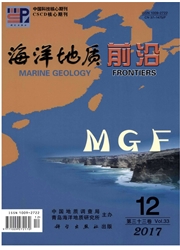

 中文摘要:
中文摘要:
在海底管道的探测中,为获知海管在海底的真实赋存状态,确定其埋藏深度或悬跨高度,多使用高频浅地层剖面仪等传统声学设备。但在海底斜坡、凹坑、凸起等不平整地层处,由于设备自身原理造成的地层探测界面偏移、图像失真及资料多解性问题仍困扰着工程人员。通过正演模拟的方法探究高频浅地层剖面仪在海底特殊地层处海管检测的波场传播特征,探讨资料的解释陷阱,并提出了解决方案。研究结果表明,利用浅地层剖面仪探测管道在海底的赋存状态,应将探测图像与海底地形、地貌、沉积物运移等因素结合起来综合考虑,把探测图像回归到真实海底环境中,以准确评价海底管道的安全状态。
 英文摘要:
英文摘要:
The Sub-bottom profiler is widely used to detect submarine pipelines,especially the burial depth and spanning height.However,the working principle of the device itself often causes distortion of detecting images and multiplicity of data under peculiar seabed topography.We,therefore,studied in this paper the interference wave features of pipes at various topographic features,such as slope,pit,bump and non-horizontal strata by forward modeling method in order to eliminate the traps in data interpretation.It is concluded that pipeline assessment should consider image and seabed topography,as well as sediment transport and other factors comprehensively.Image interpretation should be tested under the real underwater environment.
 同期刊论文项目
同期刊论文项目
 同项目期刊论文
同项目期刊论文
 期刊信息
期刊信息
